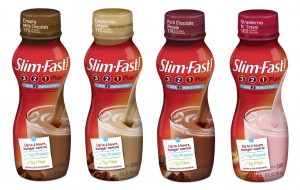
Every year, US News and World Report comes out with their report on the best and worst diets of the year. Every year, they’re pretty similar, and this year is no different. DASH, TLC, and the Mediterranean Diet are always top ranked, with some diets frequently falling near the top, such as Weight Watchers and the Flexitarian diet. No surprises here, since many of those diets have been tested using large, well-funded studies and come out demonstrating what we all know to be true: that these diets are far better than the standard American diet (SAD) that most people in this country are eating.
I readily acknowledge that moving from SAD to something like DASH or the Mediterranean diet would be a beneficial change for most people. After all, these diets recommend a significant increase in fresh vegetables and fruits, fatty fish, a reduction in fried and highly processed food and sweets, and an attention to moderate exercise and portion control. It makes perfect sense to me why these diets would make it to the top of a list developed by clinical dietitians and cardiologists, among others. Not that I’m endorsing these diets per se, but I can see why they’d show a benefit over SAD.
What I just can’t wrap my brain around is the rest of the list. Here are a few of the ranked diets, with an explanation (in quotes) that US News provided as justification for the rankings.
#9 – The Ornish Diet: “The Ornish diet got a mixed reaction from experts. On one hand, it’s nutritionally sound, safe, and tremendously heart-healthy. On the other, it’s not easy for dieters to adhere to the severe fat restriction the diet demands.”
#13 – Slim-Fast: “Slim-Fast is a reasonable approach to dieting, experts concluded. It outscored a number of competitors on weight loss and as a diabetes diet, and being highly structured, it’s fairly easy to follow. But it scored lower than many other diets on heart health.”
#18 (tie) – The Engine 2 Diet: “Experts handed out a below-average 3 stars. Though they acknowledged its benefits for heart health and diabetes control and prevention, they faulted the program for being unnecessarily restrictive and “gimmicky,” and called for more research into some of its claims. “I fail to see anything unique, innovative, or useful with this diet,” one expert said.”
#18 (tie) – The Vegan Diet: “Overall, the health experts were lukewarm on veganism despite giving it fairly high marks as a diabetes or heart disease diet. It is extremely restrictive, doesn’t offer built-in social support, and may not provide enough of some nutrients.”
#25 – Medifast: “Experts were likewise unenthused about Medifast. It scored above average in short-term weight loss but was dragged down by lower marks in most other categories.”
#29 – The Raw Food Diet: “The experts conferred solid marks on the diet for weight loss, both short- and long-term, but considered it all but impossible to follow and its nutritional completeness and safety were concerns. “Doing it well involves considerable commitment and effort, knowledge, and sacrifice,” one expert said. “And there are diets that require less of all these that are likely to be just as healthful.” ”
#31 – The Paleo Diet: “Experts took issue with the diet on every measure. Regardless of the goal—weight loss, heart health, or finding a diet that’s easy to follow—most experts concluded that it would be better for dieters to look elsewhere. “A true Paleo diet might be a great option: very lean, pure meats, lots of wild plants,” said one expert—quickly adding, however, that duplicating such a regimen in modern times would be difficult.”
Hold the phone. Paleo came in dead last, and out of 32 diets, Slim-Fast was ranked #13? What planet are these “experts” living on?
This blog post would be way too long if I were to go into detail about every single diet that was ranked higher than Paleo and describe the various shortcomings of the diet. I’m sure I don’t need to explain to my readers that plant-only diets like Engine 2, Veganism, and the Raw Food diet are lacking key nutrients like preformed vitamin A, choline, zinc, iron, omega-3s, and vitamin B12, among others. And the Ornish Diet, though it includes some animal foods like egg whites (ugh) and fatty fish, a 10% fat diet long term could lead to unstable blood sugar, elevated triglycerides, lowered testosterone, fat soluble vitamin deficiencies, and fatty liver from choline deficiency, and doesn’t reduce the risk of heart disease or cancer. Not to mention when compared in a study, a low carbohydrate diet beat the Ornish Diet (among other diets) for weight loss and metabolic benefits. For more information on why low fat diets like the Ornish Diet can be unhealthy, or even dangerous, see this, this, this, this, this, this, or this article.
In the interest of brevity, I’ll just stick to dissecting one diet that was highly ranked but is so off the mark, it’s absurd: Slim-Fast.
Slim-Fast Shakes
Here are the ingredients of one of the Slim-Fast shakes:
FAT FREE MILK, WATER, SUGAR, MILK PROTEIN CONCENTRATE, GUM ARABIC, CANOLA OIL, CELLULOSE GEL, MONO AND DIGLYCERIDES, POTASSIUM PHOSPHATE, HYDROGENATED SOYBEAN OIL, MALTODEXTRIN, SOY LECITHIN, CELLULOSE GUM, NATURAL AND ARTIFICIAL FLAVORS, CARRAGEENAN, SODIUM BICARBONATE, SUCRALOSE AND ACESULFAME POTASSIUM (NONNUTRITIVE SWEETENERS), SODIUM CITRATE, ARTIFICIAL COLOR (RED 3), CITRIC ACID, MAGNESIUM PHOSPHATE, CALCIUM PHOSPHATE, SODIUM ASCORBATE, VITAMIN E ACETATE, ZINC GLUCONATE, FERRIC ORTHOPHOSPHATE, NIACINAMIDE, CALCIUM PANTOTHENATE, MANGANESE SULFATE, VITAMIN A PALMITATE, PYRIDOXINE HYDROCHLORIDE, RIBOFLAVIN, THIAMIN MONONITRATE, FOLIC ACID, CHROMIUM CHLORIDE, BIOTIN, SODIUM MOLYBDATE, POTASSIUM IODIDE, PHYLLOQUINONE (VITAMIN K1), SODIUM SELENITE, CYANOCOBALAMIN (VITAMIN B12), CHOLECALCIFEROL (VITAMIN D3).
Looks delicious, right? Let’s shine a little light on a few of these ingredients in particular.
FAT FREE MILK – Skim milk is basically nutritionally worthless, since all of the fat soluble vitamins have been removed. Also, this is not organic milk, and industrial dairy farming is one heck of a horror show. For more information on why skim milk is so terrible, check out Butter Believer’s post on the topic.
SUGAR – Makes sense for a “healthy diet” drink to have sugar as the third ingredient, no? While sugar in small amounts is relatively benign, excessive amounts of refined sugar can lead to abdominal weight gain, blood sugar dysregulation, and has been linked to cancer and an increased risk of heart disease. I don’t have a problem with an occasional treat with sugar in it, but Slim-Fast wants you to drink two of these drinks a day (~18 grams sugar per bottle), plus two of their bars (~11 grams sugar per bar), adding up to 58 grams of sugar on a daily basis. That’s more than you get in a 16 ounce bottle of coke.
CANOLA OIL – Ahh, canola oil… One of the most popularly touted “healthy” oils today, and yet it’s highly processed, full of pesticides, is usually GMO, and is prone to oxidation. As Diane Sanfilippo points out in her 2010 post on canola oil, “The refining process involves degumming, neutralization, drying, bleaching, and deodorization. Crude oil from extraction has to be refined to obtain a high quality oil. Natural impurities of crude rapeseed oil include water, dirt, phosphatide gums, free fatty acids, color matter, odiferous and flavorous substances, natural breakdown and oxidation products of the oil itself.” Gross. Not an oil I want to eat, thankyouverymuch.
CELLULOSE GEL/CELLULOSE GUM – Another name for wood pulp. Or cotton fiber. While there are no known health effects associated with cellulose added to foods, its completely undigestible and really has no benefit to the body.
HYDROGENATED SOYBEAN OIL – Somehow, Slim-Fast found an oil worse than canola oil to add to their product. Hydrogenated soybean oil is generally used to create a creamy, buttery mouthfeel in a product. While technically not a trans fat if fully hydrogenated, soybean oil is very high in oxidized omega-6 fats, and comes from GMO soybean plants covered in pesticides, much like canola. Plus, unless the label specifically states “fully hydrogenated”, it’s still possible that the ingredient contains trans fats: the terms “hydrogenated” and “partially hydrogenated” can be used interchangeably. Hydrogenated oils can increase insulin resistance and metabolic syndrome in comparison to regular oil. There’s really no reason to be consuming this stuff.
CARRAGEENAN – This is an indigestible polysaccharide that is extracted from red algae, and is most commonly used in food as a thickener or stabilizer. Chris Kresser recently discussed whether or not carrageenan is a harmful ingredient, and concluded that it’s likely safe in small amounts for healthy people. However, it’s hard to know how much of it is in Slim-Fast, and since carrageenan is potentially carcinogenic, consuming it twice a day is not a great idea, in my opinion.
SUCRALOSE AND ACESULFAME POTASSIUM – These might be the worst ingredients in the bottle, because there’s a significant amount of evidence that these artificial sweeteners may be dangerous. Sucralose has been found to promote insulin resistance, kill beneficial bacteria in the gut, and may interfere with the metabolism of pharmaceuticals. It was recently downgraded from “Safe” to “Caution” by the CSPI after a long-term feeding study found that the sweetener caused leukemia in mice. As for Acesulfame Potassium, this artificial sweetener contains a known carcinogen and is broken down into acetoacetamide, which may affect thyroid function. None of this is something you want to be happening on a daily basis.
ARTIFICIAL COLOR (RED 3) – This food coloring is genotoxic in in vivo and in vitro assays and is an known carcinogen, yet the FDA still allows it to be used in foods. It may cause breast cancer or ADHD. I’m not sure why the FDA has banned Red #3 from cosmetics and external drugs but not food and ingested drugs. It just seems like avoiding consuming this food coloring would be a good idea.
Would you like to save this post?
Your email address is 100% safe and will never be sent spam.
Snack Bars
After reading all about the ingredients, I really don’t think people should be drinking two of these drinks a day as a replacement for meals. But if that’s not enough, here are the ingredients in one of their snack bars:
SUGAR, RICE FLOUR, POLYDEXTROSE, FRACTIONATED PALM KERNEL OIL, COCOA (PROCESSED WITH ALKALI), WATER, MALTODEXTRIN (CORN), ENRICHED WHEAT FLOUR (WHEAT FLOUR, NIACIN, IRON, THIAMIN MONONITRATE, RIBOFLAVIN, FOLIC ACID), FRUCTOSE, INULIN, GLYCERIN, CHOCOLATE, LACTOSE, SUNFLOWER OIL, PALM AND PALM KERNEL OIL, SOY LECITHIN, SALT, DEXTROSE, ISOLATED SOY PROTEIN, UNSALTED BUTTER (CREAM, NATURAL FLAVOR), MILK, NONFAT MILK, NATURAL AND ARTIFICIAL FLAVOR, WHEY, INVERT SUGAR SYRUP, SUCRALOSE AND ACESULFAME POTASSIUM (NONNUTRITIVE SWEETENERS), ARTIFICIAL COLOR (YELLOW 5 LAKE, BLUE 1 LAKE, BLUE 2 LAKE), SODIUM BICARBONATE, CORN SYRUP, PEPPERMINT OIL, COCOA BUTTER, CARAMEL COLOR, CALCIUM CARBONATE, VITAMIN E ACETATE, NIACINAMIDE, CALCIUM PANTOTHENATE, VITAMIN A PALMITATE, THIAMINE MONONITRATE, PYRIDOXINE HYDROCHLORIDE (VITAMIN B6), RIBOFLAVIN, CYANOCOBALAMIN (VITAMIN B12).
Again, let’s look a little closer at some of the ingredients contained in this bar.
SUGAR – Why is this the first ingredient in this bar? Oh right, because the ingredients are listed in descending order of predominance by weight, so that means that sugar is technically the main ingredient in this bar. Perfect.
ENRICHED WHEAT FLOUR – Otherwise known as white flour. I’m sure I don’t need to explain why white flour might be a problem. If you want to read more, Dr. Mercola has written about white flour health concerns. While white flour may not be the worst substance known to man, I certainly wouldn’t consider it a health food, and don’t believe its something people should be eating on a regular basis.
FRUCTOSE – It’s uncommon to see pure fructose as an ingredient, since most products use high fructose sweeteners such as agave or high fructose corn syrup, which still isn’t even close to 100% fructose. Naturally occurring fructose is perfectly healthy when found in fruits, and fructose only becomes a problem when calories are consumed in excess. This may be one benefit of the Slim-Fast plan: since calories are so low (~1200 per day!) it’s unlikely that the metabolic derangement that commonly comes with consuming excess fructose will occur if the daily caloric allowance is adhered to. I’m not excusing the ingredient, just putting it into context.
LACTOSE – This is a common ingredient used in low-quality milk chocolate. Not the worst thing in the world, but certainly not something you’d want to be eating if you have lactose intolerance or any GI condition like IBS.
SUNFLOWER OIL – In an amazing twist of irony, US News just ran a post on their Eat + Run blog on January 3, 2014 (6 days before the writing of this blog) called “The Shocking Truth About Sunflower Oil” – in it, the author describes the reasons why sunflower oil should not be consumed. The biggest reason is that sunflower oil has one of the highest omega-6 contents of any oil, making it an inflammatory oil. I just can’t believe the hypocrisy here. Does US News pay attention to the information they’re sharing with their readers? Anyone reading with even a remotely critical eye will notice that they’re contradicting themselves by telling people to avoid sunflower oil – that “it is not a healthy option at all” – and yet they say that Slim-Fast is “relatively nutritionally sound and safe.” Anyone else notice the contradiction here?
ISOLATED SOY PROTEIN – Soy protein isolate (SPI) is a super cheap way to bump up the protein content of a packaged protein bar. However, beyond the fact that it comes from soy (which is not a health food in most commonly consumed forms), there are many reasons why SPI is a horrible ingredient. It’s likely from a GMO source, since over 90 percent of the soybeans grown in the U.S. are genetically modified, meaning it’s filled with pesticides. The intense chemical process used to create SPI often leaves behind toxic substances like aluminum and hexane. Highly processed soy foods may affect your fertility. If you need more information on why processed soy foods should be avoided, check out this fantastic article by Sally Fallon-Morrell and Mary Enig.
ARTIFICIAL COLOR (YELLOW 5 LAKE, BLUE 1 LAKE, BLUE 2 LAKE) – More potential carcinogens, used simply to give the bar an “appealing” color. Yellow 5 contains compounds, including benzidine and 4-aminobiphenyl, that have been linked with cancer, and may cause hyperactivity in children. Blue 1 may have neurotoxic properties, and has been shown to increase the rate of kidney tumors in rats. Blue 2 has been linked to brain tumors. The fact that these colors are “lakes” is even more appalling, as the Environmental Working Group explains: “In industrial production of colorants, “lake” is a term used for pigments or dyes that are precipitated with metal salts such as aluminum, calcium, barium, or others. Some of the lake dyes may be derived from naturally occurring plant or animal ingredients but the vast majority of lakes is synthetically produced from coal tar or petroleum.” Is it really that important to have the right color on this bar to risk these adverse effects? I don’t think so.
INVERT SUGAR SYRUP – Invert sugar is sucrose (a disaccharide of glucose and fructose) that has been broken into free glucose and free fructose using acid hydrolysis or enzymatic inversion. As far as I can tell, it’s not really any worse for you than regular processed white sugar, though it does make products sweeter. And the sweeter your food, the more rewarding it is, and the more likely it is to contribute to the accumulation of body fat. Again, the significant caloric deficit encountered on the Slim-Fast plan may be enough to prevent the accumulation of body fat, but it’s not a good idea to be getting used to eating such highly sweetened foods.
CORN SYRUP – How many sweeteners does this product need to have?? I mean come on, sugar is the first ingredient… why add fructose, lactose, invert sugar syrup, AND corn syrup? The main problem I have with corn syrup is that it’s likely from GMO corn, since at least 85% of the corn grown in the US comes from GMO crops covered in pesticides like Roundup.
CARAMEL COLOR – The CSPI argues that caramel coloring is a carcinogen and should be banned from food substances. They explain that this additive is “made by reacting sugars with ammonia and sulfites under high pressure and temperatures, resulting in the formation of 2-methylimidazole and 4 methylimidazole, which in government-conducted studies caused lung, liver, or thyroid cancer or leukemia in laboratory mice or rats.” Caramel coloring may also significantly increase the risk of high blood pressure and has been shown to have immunotoxic effects in rats. Yet another completely pointless ingredient with potentially harmful effects. Nice one, Slim-Fast.
Conclusions
I hope I’ve made it clear that Slim-Fast products are full of unhealthy (and potentially harmful), highly processed ingredients made from GMO crops. Sure, you might lose weight on a Slim-Fast plan, but that’s mainly because it causes a significant calorie restriction if you follow the plan exactly. The plan recommends 1200 calories per day, which will obviously lead to weight loss, which is the primary goal here. But Slim-Fast seems to be prioritizing weight loss at all costs, even above the health of its customers. This isn’t even just because of the disgusting ingredients used in their products. It’s also because the calorie allotment on the plan is unsustainable and unhealthy in the long term.
1200 calories per day is pretty darn low, especially if you’re even moderately active. The Minnesota Starvation Experiment considered 1,560 calories per day to be “semi-starvation.” This diet caused severe weakness, depression, fatigue, anemia, bradycardia, and edema in subjects; full recovery from the diet took 8-12 months of eating 2,500-3,500 calories per day. The World Health Organization defines starvation as anything less than 2100 calories a day for men and 1800 a day for women. The United Nation’s Food and Agriculture Organization (FAO) defines the average person’s minimum calorie requirement per day as approximately 1,800 calories.
Significant undereating causes a reduction in metabolic rate, which can slow the rate of weight loss over time. Go Kaleo thinks the diagnosis of adrenal fatigue is really just a cover for undereating. (I do think adrenal fatigue is a legitimate condition but undoubtably can be caused by severe, long-term caloric restriction.) Dr. Emily Deans says low calorie diets can literally cause you to “go crazy”, leading to anxiety, dizziness, food obsession, depressed sex drive, poor concentration, and more. Former diet coaches have apologized for putting their clients on such a low calorie plan.
I need to stop here, because this calorie-restriction issue could really be another blog post in itself. A 1200 calorie per day diet plan based on highly processed, synthetic nutrient-fortified junk foods is not a healthy diet. And the fact that US News and World Report, with the help of it’s supposed “experts”, ranked the Slim-Fast diet as #13 on it’s list of healthiest diets, with Paleo ranked dead last at #31, BLOWS MY MIND.
The worst part is that the criticism of Paleo that gets repeated over and over is that “by shunning dairy and grains, you’re at risk of missing out on a lot of nutrients,” or that “diets that restrict entire food groups are difficult to follow,” or that its too expensive because “the produce section and meat counter are among the priciest corners of the grocery store.” Yes, eating healthier is more difficult than eating garbage, and more expensive as well. And since when did humans need grains and dairy to get the nutrients they need? (As an aside, I believe full fat, organic (even raw) dairy products are healthy. But we know that’s not the kind of dairy these folks are talking about.) Can these “experts” please tell me one nutrient – just one – that you can’t get without consuming grains?
And it gets more absurd. US News wonders “Can you get used to the idea of breadless sandwiches? Or having your milk and cookies without either milk or cookies?” How the heck are milk and cookies considered to be an important part of a healthy diet? I’m all for moderation and enjoying food, but are milk and cookies part of the DASH plan? I suppose milk and cookies makes up about two-thirds of the Slim-Fast plan, so maybe that’s why it got so highly ranked.
This kind of statement, however, is just so ridiculous that I’m not even sure how to respond to it. You can eat as much dessert as you want on a Paleo plan. The whole point is that dessert is a treat, not a health food per se, and just because Paleo eaters typically eschew grains and dairy doesn’t mean they’re not enjoying their real-foods diet. I must say, pastured eggs cooked in grass fed butter with a side of pastured bacon and a piece of fruit sounds like a far more delicious breakfast than a 200-calorie Slim-Fast shake and a Slim-Fast bar when you’re starving an hour later.
I’m mostly angry about this not because Paleo is getting crapped on (again), but because the mainstream media, with help from dimwitted medical “experts”, are brainwashing the public to believe that a calorie is a calorie, that food quality doesn’t matter as long as you’re not eating too much, and that grains and low-fat dairy are an essential component of the diet but that animal fats and meat are not only optional but best to be avoided. It’s so backwards it makes me want to puke.
I keep thinking there’s going to be a mindset change coming in our culture at large, but this kind of event puts a damper on my optimism. I just hope that I can play a small part in reaching as many people as possible with information about what constitutes a truly healthy diet, before our country goes down the crapper from exorbitant healthcare costs due mainly to our horrible diets. And with misleading articles like US News’s “Best Diets” report, things are just going to get worse before they get better.
US News, you’ve got some ‘splainin’ to do…
This post may contain affiliate links. If you click on a link and make a purchase, I may receive a small commission.




+ show Comments
- Hide Comments
add a comment